Head to the birthplace of the Renaissance with this inside guide on how to see Florence in one day.
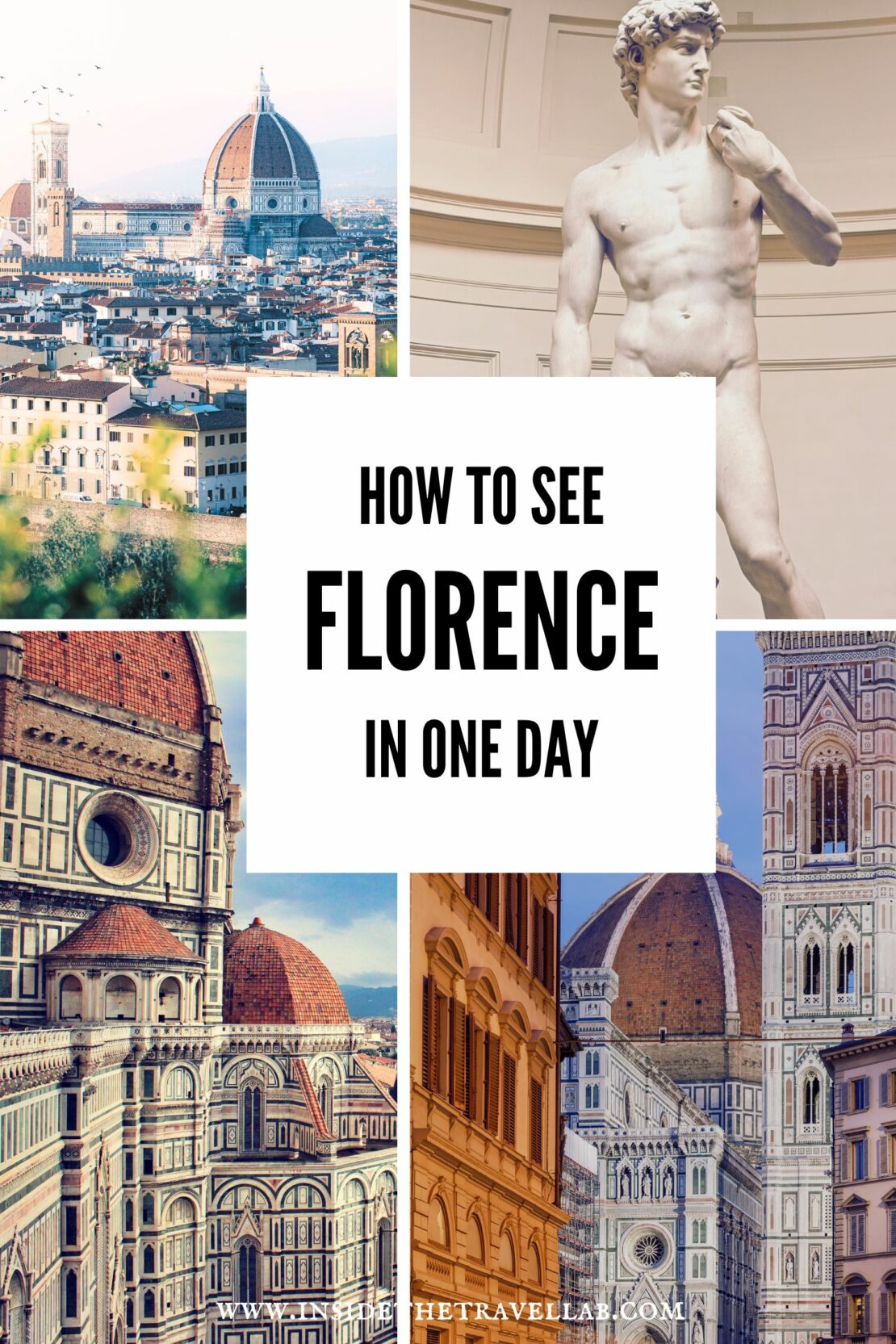

Florence in One Day: Why Visit?
Ah, Florence. What a place.
Standing in Piazza del Duomo at dawn, before the tour groups and selfie sticks arrive, is the stuff that dreams are made of, the terracotta dome of the Cathedral of Santa Maria impossibly large against a pale sky.
This one small city contains centuries of history, art, science and discovery, not to mention the panache to make it all look good at the same time.
But here’s the dilemma: the birthplace of the Renaissance doesn’t fit neatly into 24 hours. You know this. I know this. Florence itself seems to know it, flaunting masterpiece after masterpiece with the confidence of a city that understands its own significance.
Yet life being what it is, with flights to catch, and bills to pay, sometimes one day is all you have.
So, I’ve reflected on the time I spent in Florence and pulled out the highlights.
Here’s how to make those hours count.
What follows is a full-day Florence itinerary in the historic centre that covers the main attractions whilst also leaving room for some spontaneous moments too.
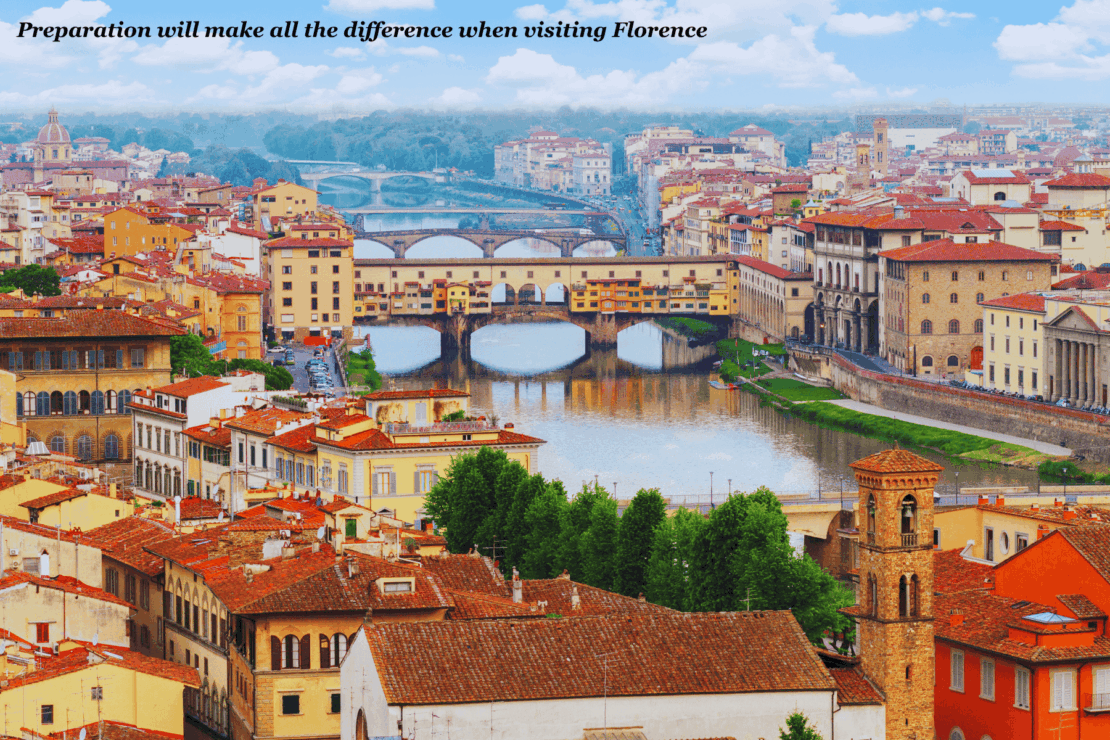

Before You Go
The difference between a frustrating day in Florence and a perfect day often comes down to preparation.
Book in Advance
Three things absolutely require booking to avoid the long lines: the Accademia Gallery (for Michelangelo’s David), the Uffizi Gallery, and Brunelleschi’s Dome. Check the official website for each (look for .it domains to avoid third-party markups). You’ll need a time slot for the dome climb. Book a slot for early morning if you can.
Tip: whilst you’re planning, consider adding one more reservation to your list: a table at Art Bar Florence for an afternoon aperitivo. This tucked-away spot offers views that rival the piazzas without the crowds, and securing a table means you’ll have a guaranteed refuge when museum fatigue sets in around 3 PM.
Start Early
Really early. An early start changes everything in Florence. Arrive at your first stop when it opens, and you’ll have that brief window when the art feels like it’s yours alone. By 10 AM, the city centre transforms into something else entirely.
Pack Light
Comfortable shoes for cobblestones, a small daypack, water, and sunscreen in summer. If you’re arriving by a high-speed train ride from Rome or major cities, you’ll find luggage storage at the main train station (Santa Maria Novella).
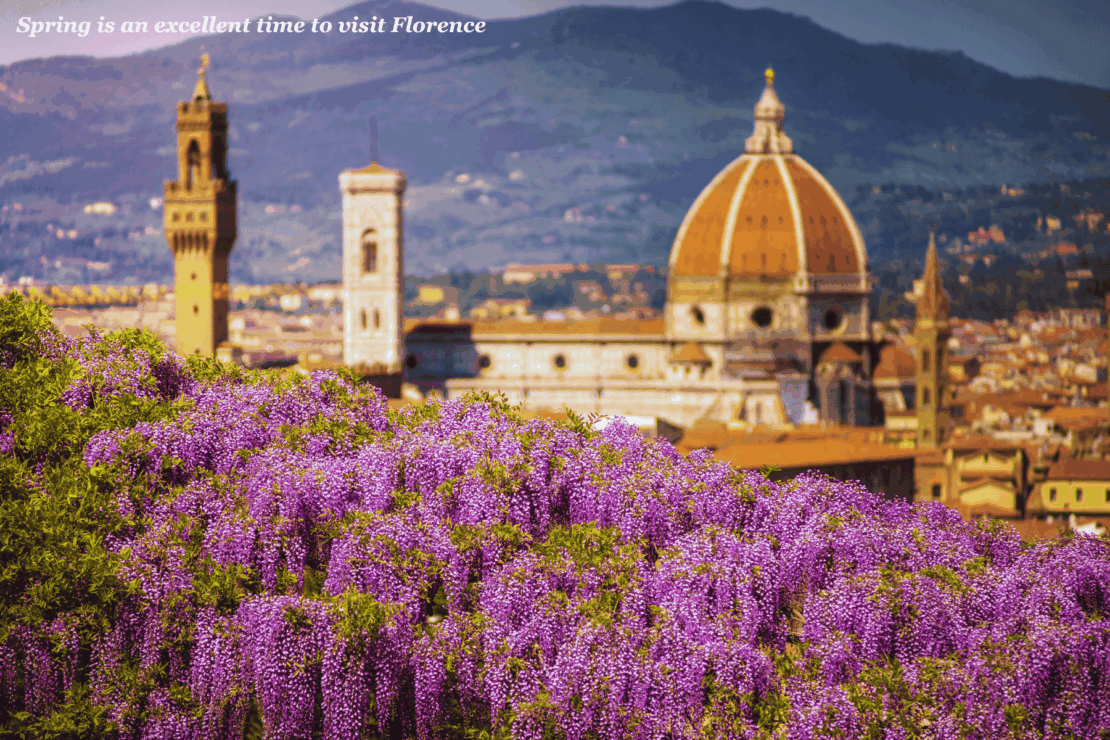

The Best Time to Visit is Shoulder Season
Arrive April to June or September to October, when Florence breathes a bit easier. Summer brings heat and crowds in equal measure. I once visited during August and I’m still not sure I’ve recovered from the crush. But regardless of when you arrive, this is a walking city. The city centre is compact enough that you can cover most major attractions on foot, and the distances between them rarely exceed a 15-minute walk.
Really hate crowds? Don’t forget to read our guide to avoiding them in Venice before your next Italian escape.
One more thing: if you’re short on time or new to Florence, consider a guided tour. A knowledgeable tour guide can unlock context you’d otherwise miss, and many day tour packages include skip-the-line access. It’s the best way for first-time visitors to see the Renaissance architecture and Renaissance art without the logistical headache.
Morning: Brunelleschi’s Masterpiece and Michelangelo’s Giant
Your day begins where Florence itself seems to begin: at the architectural heart that’s defined this city’s skyline for six centuries.
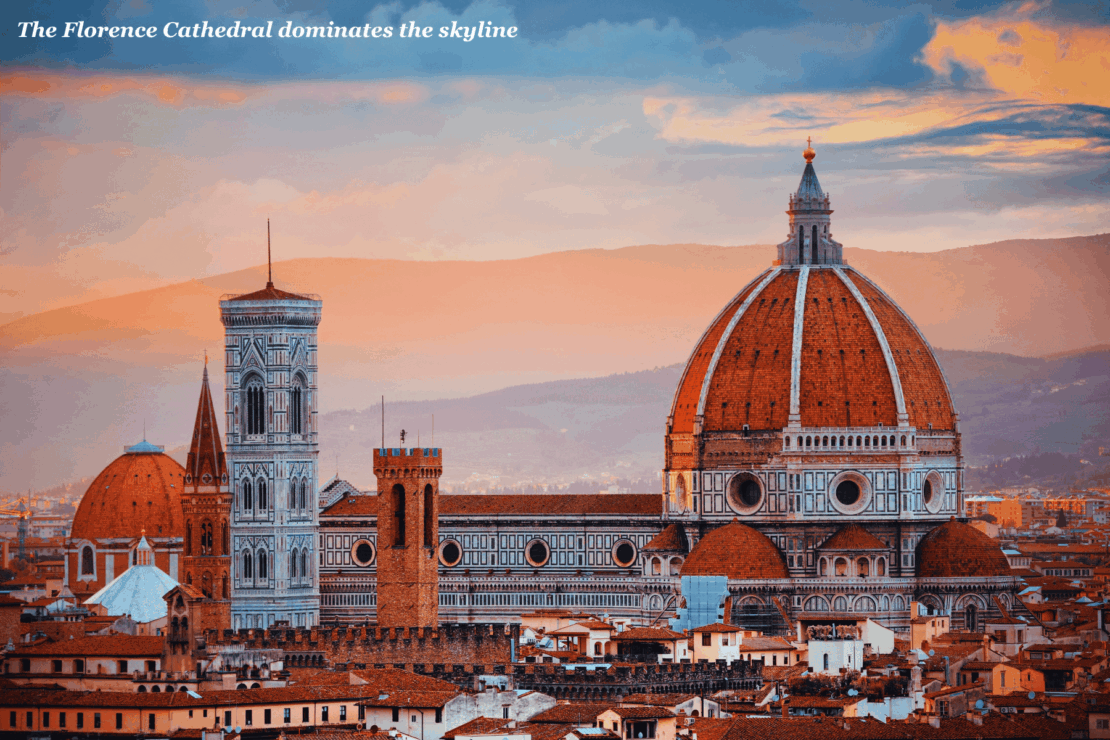

The Duomo Complex
Aim to arrive at Piazza del Duomo by 8 AM. The Florence Cathedral dominates the skyline and has done so since Filippo Brunelleschi completed his dome in 1436. The Duomo complex includes the cathedral itself, Giotto’s Bell Tower, the Baptistery, and the Opera del Duomo Museum, all connected by a single pass if you’re determined to see everything.
But you’re not here for everything. Not today.
The Cathedral of Santa Maria del Fiore is a study in contrasts: ornate exterior, surprisingly austere interior. The real draw is the climb. You’ve booked a time slot for Brunelleschi’s Dome (463 steps, narrow passages, not for the claustrophobic).
From the top of the dome, Florence spreads below like a Renaissance painting made real: terracotta roofs, the Arno River cutting through, Tuscan hills in the distance. This is why you came.
Can’t face the crowds or the climb? Giotto’s Bell Tower offers an alternative. At 414 steps, it’s only slightly less demanding, and the view arguably better because the dome itself sits in your frame.
Down in the piazza, pause at the Baptistery’s eastern doors. These are reproductions (the originals by Ghiberti live in the museum), but even the copies gleam with Renaissance ambition. Michelangelo called them the Gates of Paradise, and standing here in morning light, you see why.
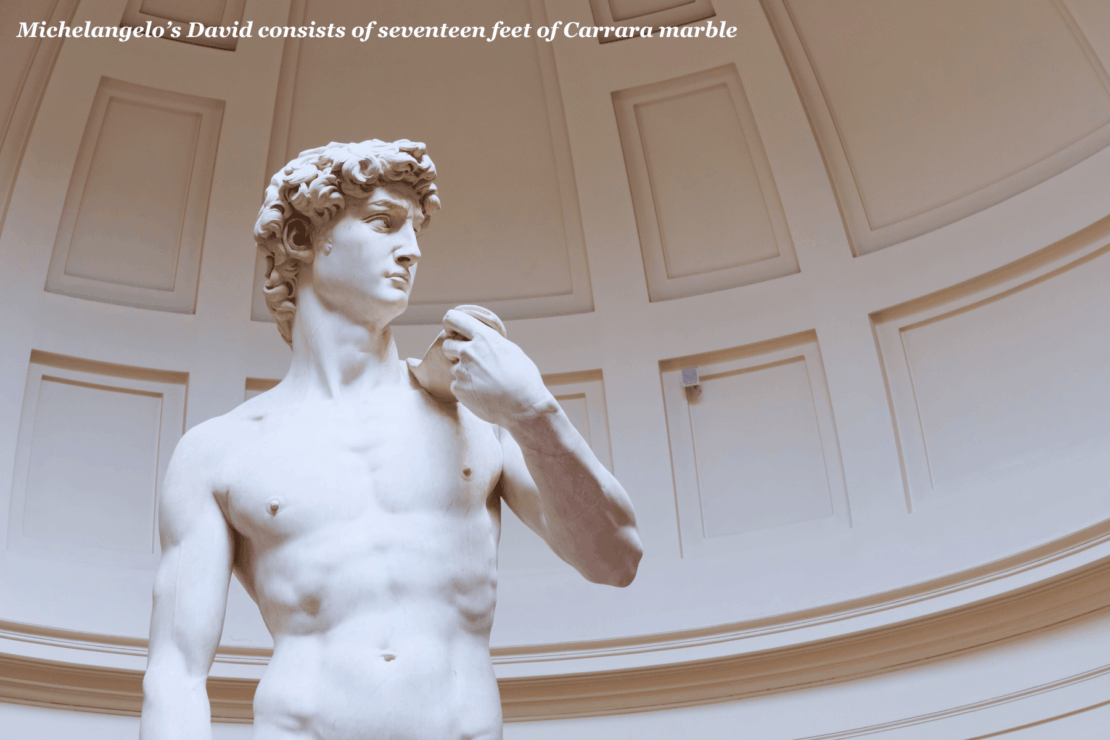

Meeting David
From the Duomo, it’s a 5-minute walk to the Accademia Gallery. This small museum exists, essentially, for one reason: Michelangelo’s David.
You think you know what to expect. You’ve seen photographs. You’ve seen replicas, including the one in Piazza della Signoria you’ll encounter later. Then you walk into the tribune where David stands on the ground floor, and the scale of him renders everything you thought you knew irrelevant.
Seventeen feet of Carrara marble, carved between 1501 and 1504 by a young man who understood both stone and human anatomy. The muscles are anatomically precise. The hands are oversized deliberately, some say, to represent the hand of God.
Walk around him. Notice how the light changes the marble’s surface. Notice the unfinished Prisoners nearby – Michelangelo’s half-emerged figures that seem to struggle out of stone- and consider what it means to see work in progress by one of the world’s most renowned artists.
The Accademia also houses much, much more (Renaissance paintings, musical instruments, works by Fra Angelico), but David is, without a doubt, the biggest hit.
Late Morning: Where Florence Shows Its Hand
By now, you’ve conquered the city’s two most famous artistic achievements. What comes next shows you how Florence functions, not as a museum, but as a living city that happens to contain centuries of genius.
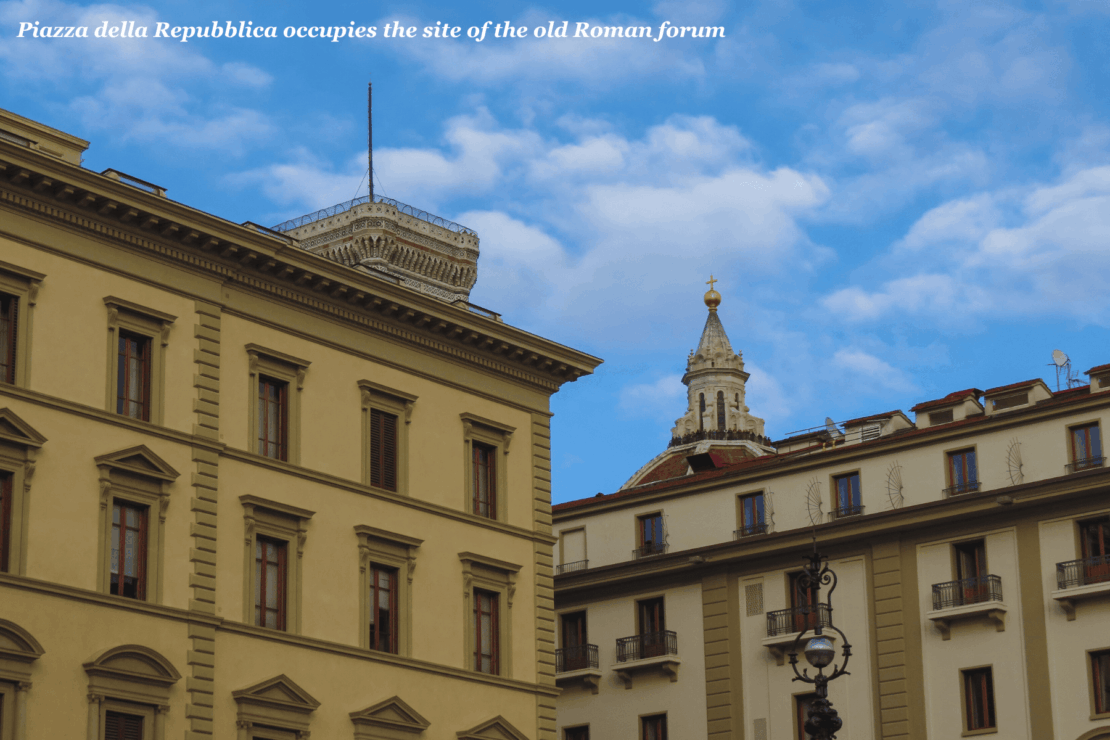

Coffee with History
Walking south from the Accademia, you’ll pass through Piazza della Repubblica. This grand square, with its triumphal arch and vintage carousel, occupies the site of the old Roman forum.
During the Middle Ages, it served as the city’s market. Now it hosts elegant coffee shops like Caffè Gilli and Paszkowski, where tourists and locals pause for espresso.
Stand at the bar if you want to blend in. It’s faster, cheaper, and more Florentine. Or take a table and watch Florence pass by. Either works.
The Open-Air Gallery
Piazza della Signoria is where the city’s political power has been concentrated for centuries.
Palazzo Vecchio anchors one end: medieval fortress, city hall, Medici family seat of power. Its tower rises 94 metres, offering arguably better views than the Duomo climb and attracting fewer crowds. The courtyard is free to explore.
Outside, marble and bronze figures, including Donatello’s Judith and Holofernes, populate the piazza. The replica David stands where the original once stood and Neptune rises from his fountain. Under the arched Loggia dei Lanzi, Cellini’s Perseus holds Medusa’s severed head aloft whilst Giambologna’s Rape of the Sabine Women spirals upward in marble.
It’s all very impressive. And it’s no surprise to learn that the piazza sits within a UNESCO World Heritage site that encompasses Florence’s entire historic centre.
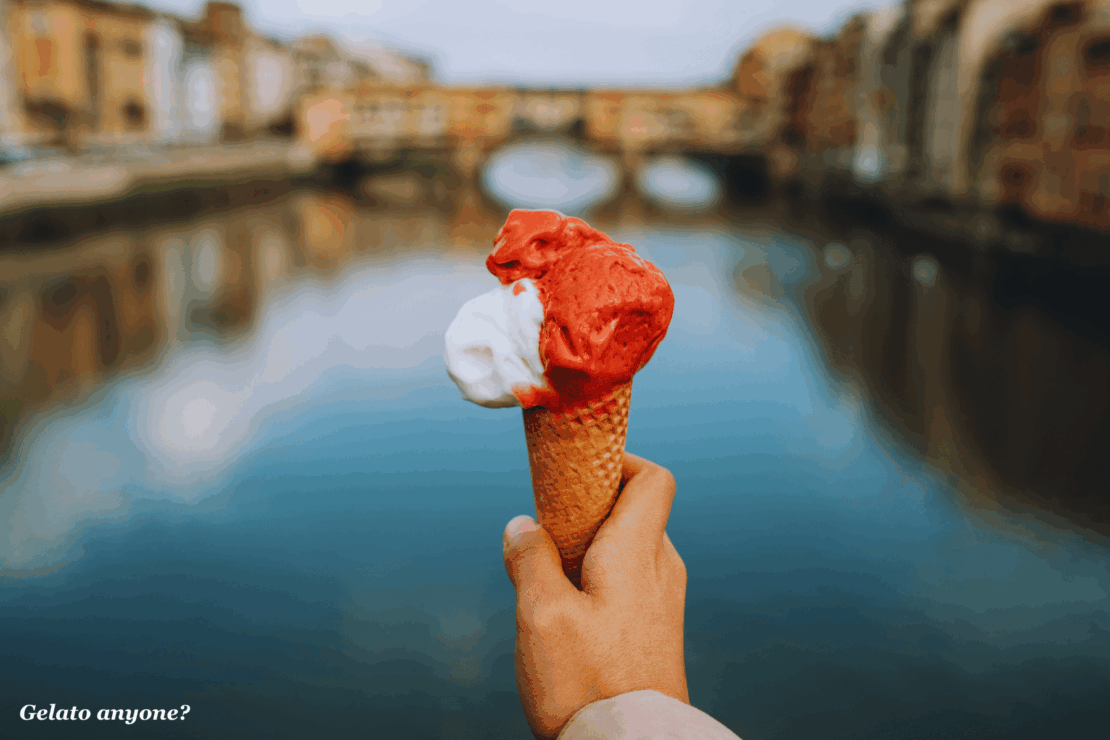

Lunch: Eating Like You Mean It
By late morning, you’ve earned Tuscan fuel. Two approaches present themselves: quick and iconic, or sit-down and substantial.
The Sandwich Shop Phenomenon
All’Antico Vinaio appears on nearly every Florence guide, Instagram feed, and travel forum, which should make it overrated but somehow doesn’t.
This humble sandwich shop on Via dei Neri (a 5-minute walk from Piazza Signoria) has become such a perfect spot for locals and visitors that the shop has expanded internationally.
Their star is the schiacciata, a Tuscan flatbread split and stuffed with truffle cream, pecorino, prosciutto, spicy eggplant, and sun-dried tomatoes, which arrives as a flavour bomb wrapped in paper. Fresh bread, generous fillings, reasonable prices. Expect to wait 15-30 minutes during peak times.
If the line defeats you, try I’ Girone De’ Ghiotti or SandwiChic nearby.
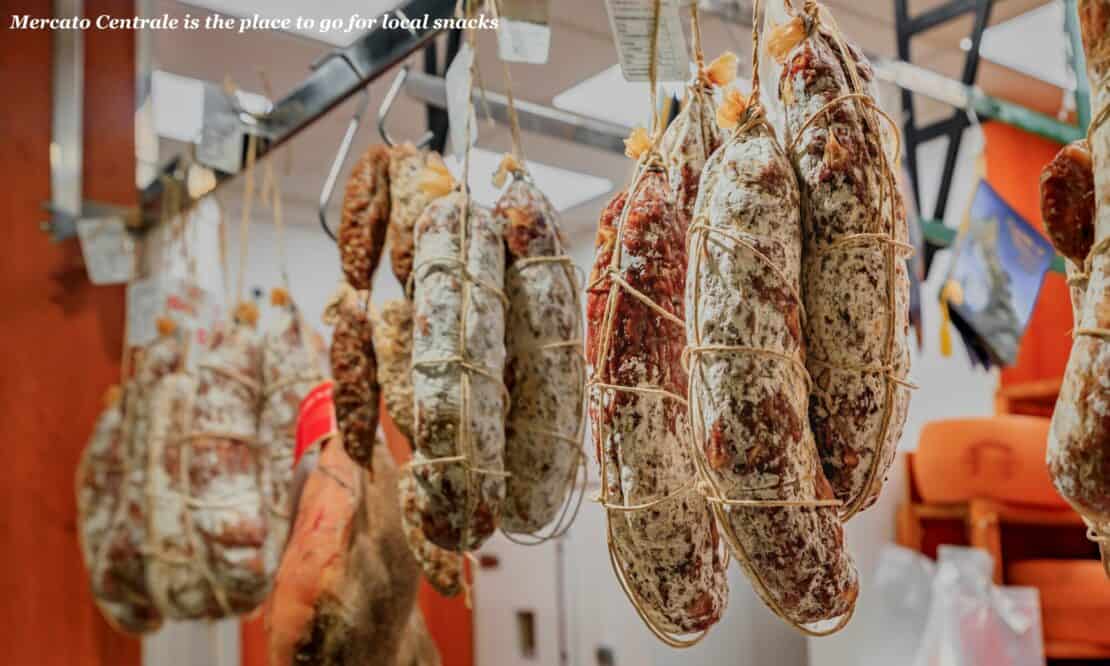

Mercato Centrale and Trattorias
The Central Market near San Lorenzo offers another route. Upstairs functions as a modern food hall (pasta, pizza, seafood, salads, wine). Downstairs (morning only) is the traditional market, produce and cheese and hanging prosciutto.
For a proper sit-down meal, Trattoria da Garibardi near San Lorenzo delivers authentic Tuscan cooking, including ribollita soup, fresh pasta, and yes, Florentine steak if you’re planning ahead.
Save the bistecca alla Fiorentina for dinner when you have time to appreciate it properly, but know that most of the best things you’ll eat in Florence come from these neighbourhood spots rather than anywhere tourist-facing.
Want to eat your way around the country? Don’t miss our guide to Trieste’s unique cuisine and this authentic ragu recipe guaranteed to bring a taste of Italy home with you.
Gelato Interlude
Between lunch and your next stop, find gelato. Florence claims to have invented it in the 16th century. Whether that’s true matters less than finding the best gelato now.
Look for gelato stored in covered metal tins rather than piled into colourful mountains, as the latter signals artificial ingredients.
La Carraia (two locations, including one near Santo Spirito), Gelateria dei Neri (on Via dei Neri), or Perchè No! near Piazza della Repubblica, all qualify. Natural flavours, creamy texture, reasonable prices. Good luck choosing just one flavour.
Afternoon: Choosing Your Own Renaissance
This is where your day in Florence diverges based on what drew you here in the first place. Art museum devotees and outdoor wanderers need different things, and Florence accommodates both.
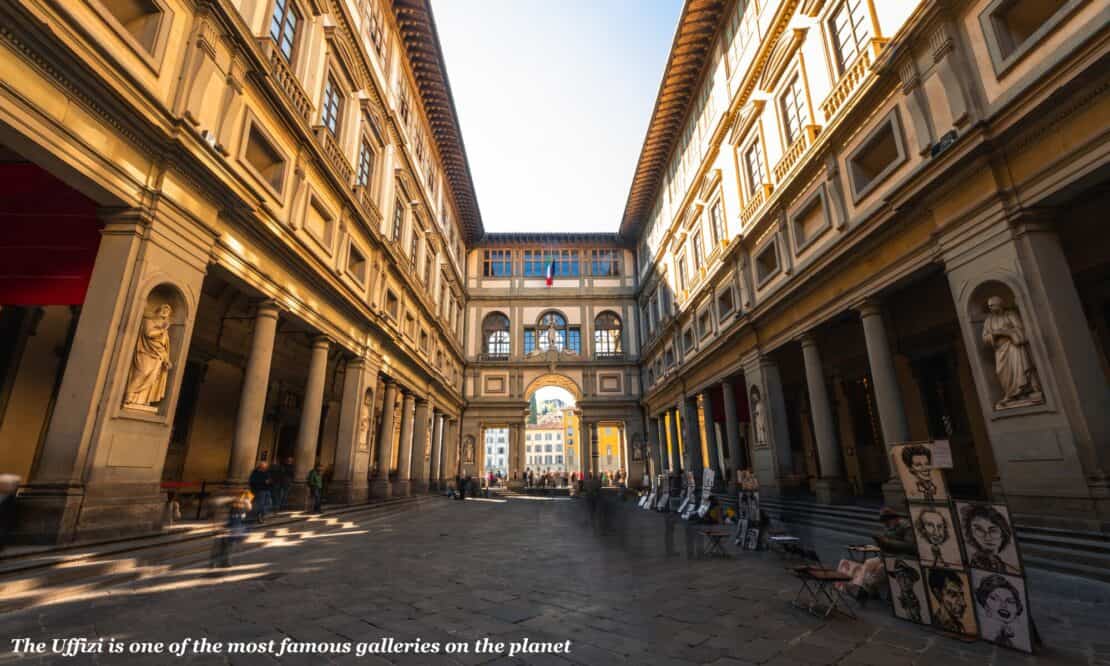

If Art Is Why You Came
The Uffizi Gallery sits adjacent to Piazza della Signoria, holding one of the world’s most important Renaissance art collections. Designed by Giorgio Vasari in the 1560s as offices for the Medici family (“Uffizi” translates as “offices”), it became a public gallery in 1765 and hasn’t stopped overwhelming visitors since.
A proper visit requires 2-3 hours minimum. Even a highlights tour demands 90 minutes and considerable focus. Pre-booking is essential (closed Mondays). A guided tour helps target the must-sees if you’re working within limited time constraints.
What You’ll See:
Botticelli’s Birth of Venus and Primavera, Leonardo da Vinci’s Annunciation, Michelangelo’s Doni Tondo, Caravaggio’s Medusa and Bacchus. Works by Fra Angelico, Raphael, Titian, and countless others. The building itself is Renaissance architecture, with long corridors overlooking the Arno and windows framing views of Ponte Vecchio.
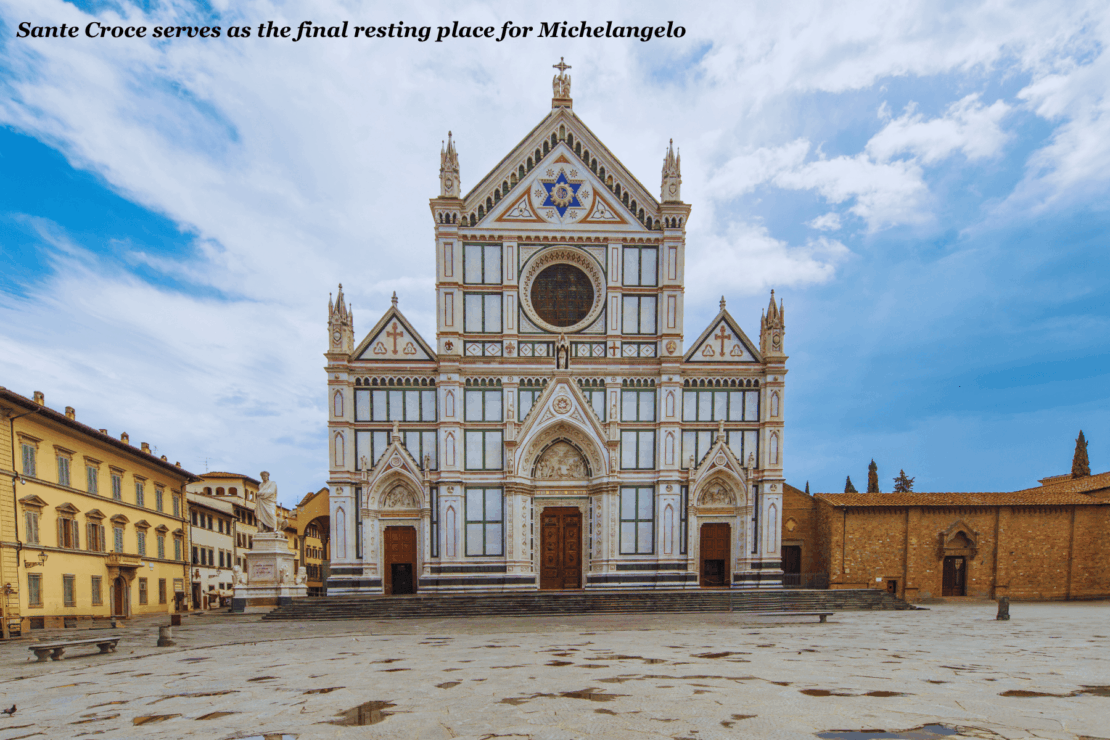

Or: Santa Croce and Artisan Florence
If museums feel like too much, or if outdoor exploration suits your mood better, head east to the Basilica of Santa Croce. This 14th-century Franciscan church serves as the final resting place for Michelangelo, Galileo, Machiavelli, and Rossini.
The neo-Gothic marble façade photographs beautifully. Inside, you’ll find Giotto’s frescoes and elaborate tombs. Adjacent, the Scuola del Cuoio (leather school) lets you watch artisans craft leather goods using techniques unchanged since medieval times. The smell of tanned leather in these workshops is unforgettable.
Entry costs around €8 and requires 45 minutes. Or skip it entirely and wander the historic centre’s medieval quarter. Via Tornabuoni offers luxury shopping (Gucci, Ferragamo).
The Straw Market near Piazza della Signoria sells souvenirs. Rub Il Porcellino’s bronze nose for good luck, a tradition that has worn the boar’s snout smooth.
Walking distance from any of these major attractions to any other rarely exceeds fifteen minutes. Florence rewards wandering. Just be mindful of where you’re heading next.
Mid-Afternoon: Crossing into Another World
The Arno River divides Florence into two distinct personalities, and crossing from one to the other feels like stepping through a portal. The bridge that connects them happens to be the city’s most famous landmark.
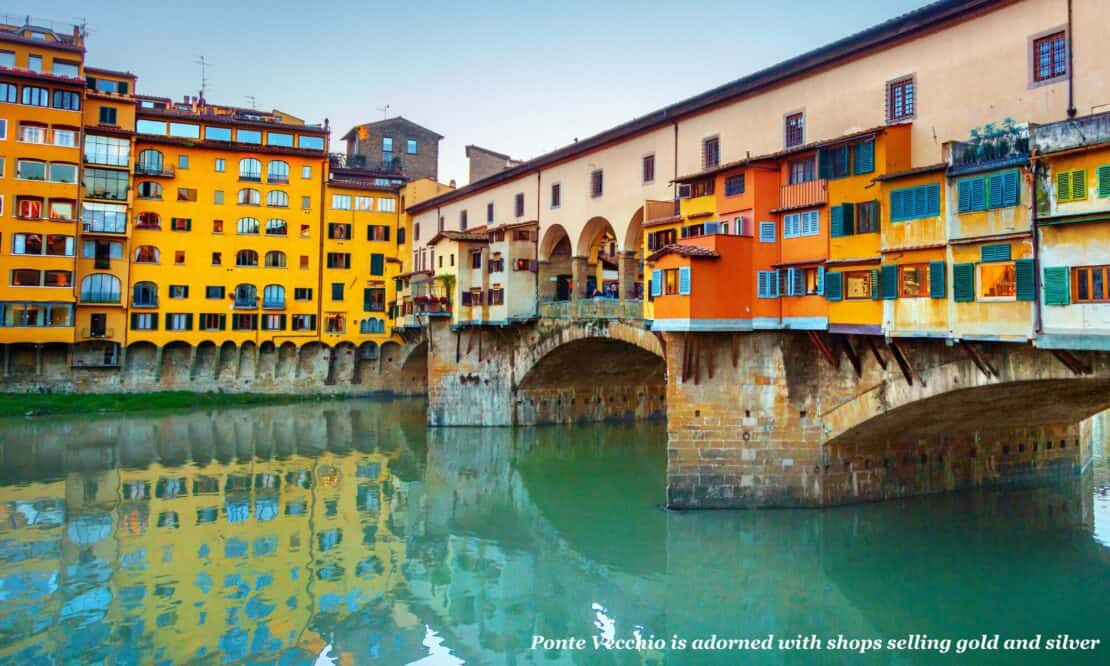

More Than Instagram
Ponte Vecchio demands your attention not through size but through survival. This historic bridge dates to 1345, built as a medieval stone arch over the Arno River.
Initially lined with butcher shops, convenient for tossing offal into the water below, the bridge was transformed in 1593 when Duke Ferdinando de’ Medici evicted the butchers and installed goldsmiths and jewellers instead.
They remain today, tiny shops glittering with gold in shop fronts barely wider than doorways. Window-shop if you’re not buying. The mid-bridge terraces offer views up and down the river.
Above runs the Vasari Corridor, the Medici’s private elevated walkway connecting Palazzo Vecchio to Pitti Palace across the river. Designed by Giorgio Vasari in 1565, it let the family move unseen between residences and offices – medieval times meeting Renaissance privilege.
During World War II, retreating German troops destroyed every bridge in Florence except this one. Accounts differ on why but the result is you can still cross these medieval stones six centuries after their placement.
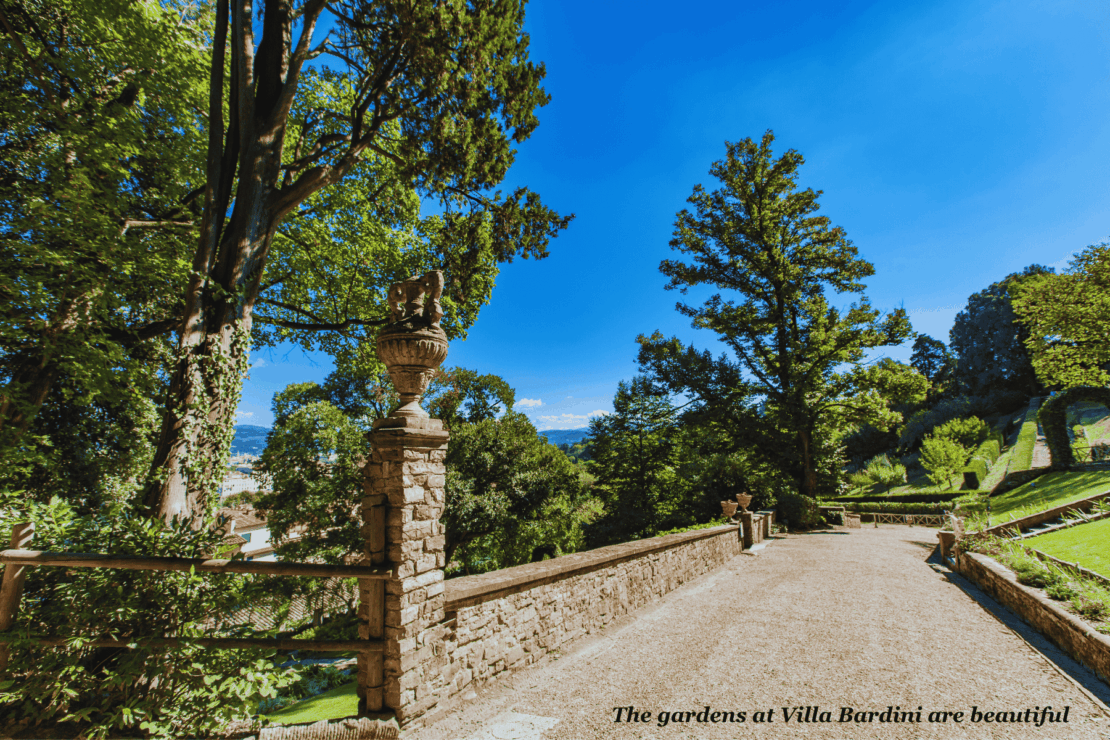

The Other Side
Oltrarno (“other side of the Arno”) feels more local. Artisan workshops cluster in narrow streets where you’ll find leather craftspeople, jewellers, and mosaic artists working in spaces barely large enough to turn around in.
Pitti Palace dominates the neighbourhood, an immense Medici residence now housing multiple museums. In one day, you won’t have enough time for Palazzo Pitti’s interior unless you’ve skipped the Uffizi entirely. Admire the façade. Move on.
Behind the palace, Boboli Gardens offer 16th-century formal landscaping: manicured paths, fountains, grottos, sculptures among cypress trees. It’s an outdoor museum demanding entrance tickets (around €10, closes at sunset). Worth 30-40 minutes if you’re feeling museum fatigue and need green space.
Adjacent Villa Bardini and its Rose Garden provide alternatives, though you likely won’t have time for both. (As a side note, the garden blooms spectacularly in spring.)
Santo Spirito church, designed by Brunelleschi, sits in a square where local life continues regardless of tourism. Children play. Residents take coffee. A young Michelangelo carved a wooden crucifix that hangs in the sacristy. The piazza itself feels like a great place to rest before your next stop.
Evening: The Golden Hour and Beyond
As the afternoon slides toward evening, it’s time for the view that defines every Florence visit.
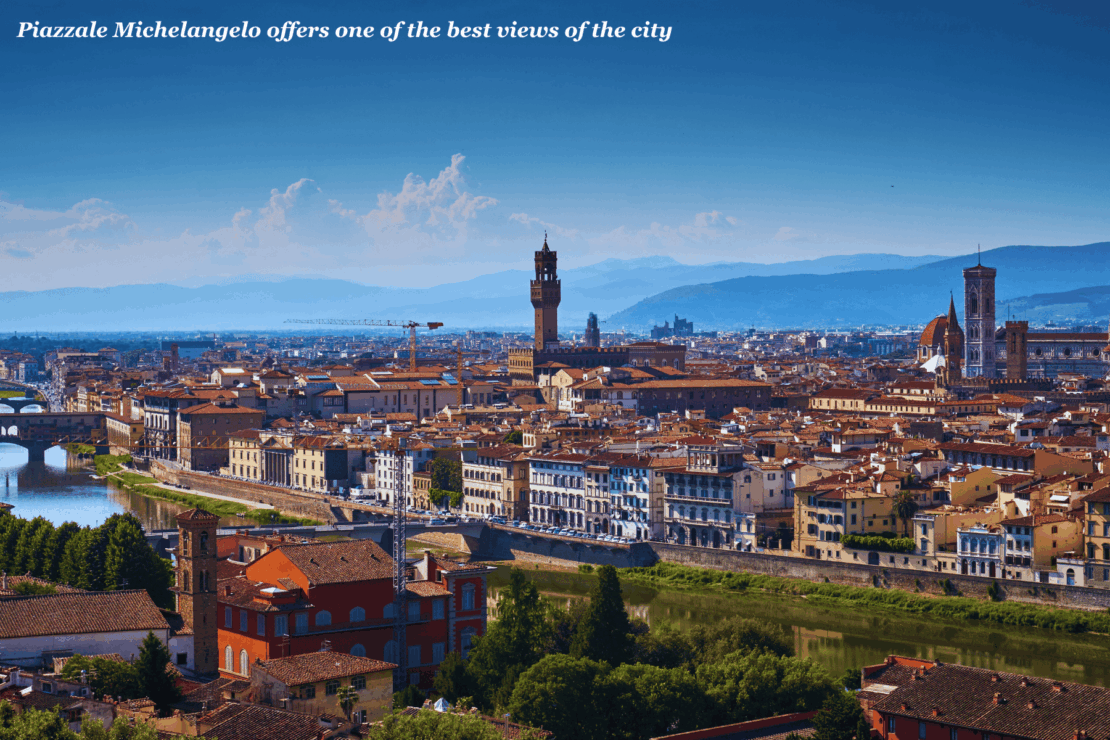

The View That Stops You
Piazzale Michelangelo sits on a hill across the Arno, offering what many consider the best views over Florence. Getting there requires either a 20–30-minute uphill walk from Ponte Vecchio or a short taxi ride. Bus routes 12 or 13 also climb the hill if you prefer public transport.
Whichever way you go, you’ll reach a large plaza, essentially a car park with a viewpoint, where a bronze David replica presides over the entire city spread below.
Brunelleschi’s Dome rises from terracotta rooftops. Palazzo Vecchio’s tower punctuates the skyline. The Arno River curves through it all, backed by Tuscan hills going purple in late afternoon light.
Yes, it’s crowded. Yes, there are souvenir vendors and tour buses. But I challenge you not to be moved, all the same.
Time your visit for late afternoon, regardless of the season. The sky turns gold, then pink, then that particular blue that makes you understand why Renaissance painters obsessed over light.
For a quieter alternative with equally stunning views, climb the stairs behind the piazzale to San Miniato al Monte. If you’re lucky, you’ll hear Gregorian chants from the monks during vespers, a hauntingly beautiful addition to an already memorable moment. Find more hidden gems in Italy here.
Stay until the lights come on across the city. Watch Brunelleschi’s Dome illuminate against a darkening sky. This is what people mean when they talk about the cradle of the Renaissance: not just the art and architecture, but the way centuries of human achievement concentrate into a single view.
The Rose Garden path offers a scenic descent back to river level, gentler than the climb up. Or take a taxi. Either way, it’s now time for dinner.
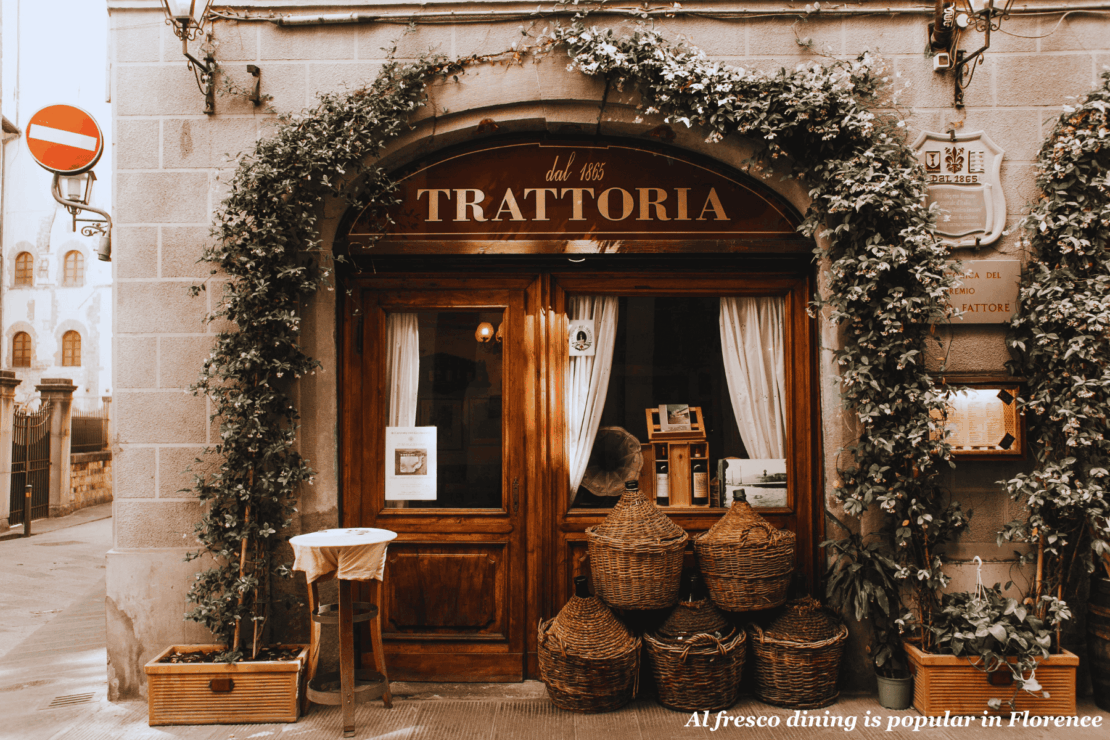

Tuscan Tables
Evening dining in Florence ranges from rustic family trattorias to Michelin-starred elegance. Given you’ve spent a full day walking the historic centre, choose atmosphere and authenticity over novelty.
In Oltrarno, Trattoria 4 Leoni near Piazza della Passera is the perfect place to try the pear ravioli in taleggio cheese sauce that people recreate at home months later. Osteria del Cinghiale Bianco specialises in wild boar. Trattoria La Casalinga offers home-style cooking in a space that feels like someone’s dining room because essentially it is.
Back in the city centre, Buca Lapi occupies 16th-century cellars under Palazzo Antinori. Operating since 1880, it’s become one of the best places for bistecca alla Fiorentina.
Where to Rest Your Head
Most one-day visitors arrive via day trip from Rome, Milan, or cruise ships docking at Livorno. High-speed trains and rental car services make Florence accessible from major cities in under two hours. If you’re staying overnight, choose accommodation in the city centre to maximise your time.
Here are some recommendations.
- Hotel Pendini occupies a 19th-century building on Piazza della Repubblica, literally in the heart of everything. Operating since 1879, it offers mid-range pricing, old-world atmosphere, and the kind of location where you step outside directly into Florence. Some rooms overlook the square.
- Rocco Forte Hotel Savoy delivers five-star service on Piazza della Repubblica. Rooms overlook the Duomo, with in-house dining overseen by Michelin chefs.
- Portrait Firenze, part of the Ferragamo family’s collection, offers all-suite accommodation with Ponte Vecchio views. The ultimate luxury option, priced accordingly.
Tip: avoid bringing a rental car into Florence’s centre. ZTL restricted zones mean fines for unauthorised vehicles. The main train station (Santa Maria Novella) is within walking distance of everything, making train tickets the smarter choice.
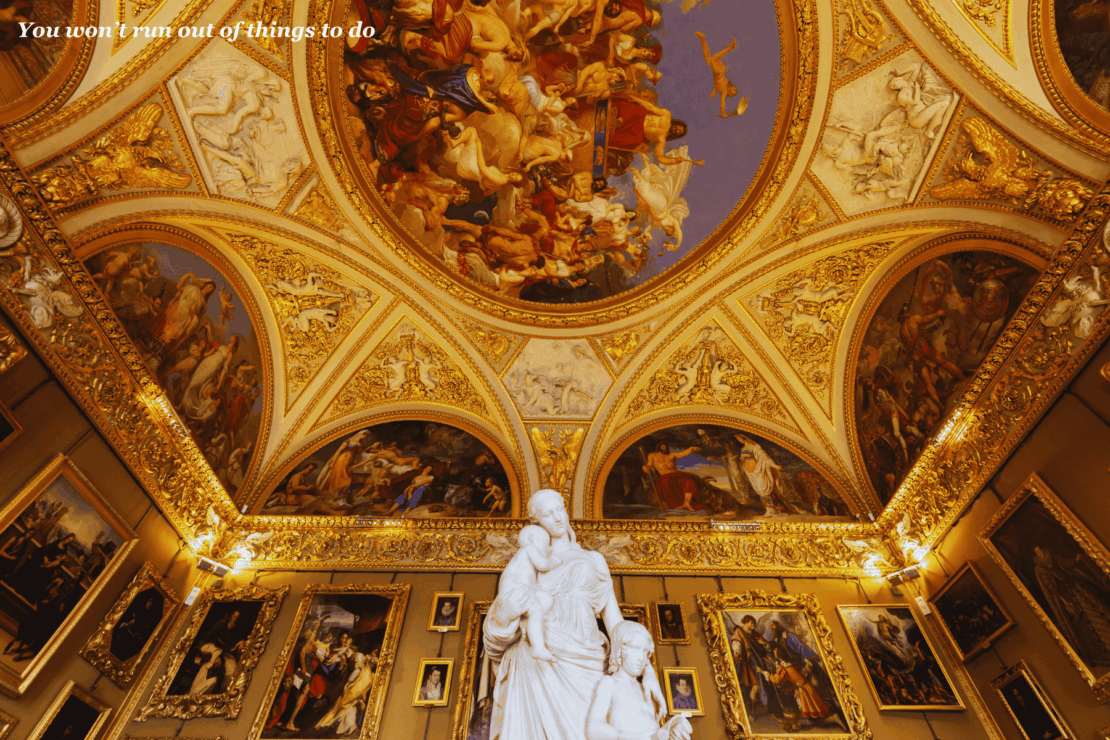

Making Every Hour Count
A few final considerations help maximise your limited time in Florence.
- Guided tours versus independent exploration depends on your preference. Tours offer context and skip-the-line benefits. Independence offers flexibility and pace control. Both work for first-time visitors if planned properly.
- If you return, and Florence tends to demand return visits, consider day trip options to Cinque Terre, San Gimignano, or Chianti wine country. Each deserves a day itself. Your next stop might be medieval hill towns or coastal villages, depending on which direction you travel.
- Safety remains straightforward. Watch for pickpockets in crowded areas, keep valuables secure, and use common sense. Florence is generally safe even after dark in tourist areas.
- What to skip without guilt. You can’t see everything. Accept this. The permission to pause matters more than ticking boxes. Listen to street musicians on Ponte Vecchio. Notice how leather-scented air fills the Oltrarno workshops. Watch the afternoon sun illuminate Santa Croce’s marble. These unplanned moments often lodge deepest in memory.
Florence Leaves a Mark
In 24 hours, you’ve covered Brunelleschi’s marvel of engineering and Michelangelo’s marble genius. You’ve walked medieval plazas where the Medici family consolidated power. You’ve seen Botticelli’s Venus and tasted Tuscany’s flavours. You’ve watched sunset turn the birthplace of the Renaissance golden from a hillside while Florence spread below like proof that human beings sometimes get things right.
And yet, this barely scratches the surface. Florence contains enough art, history, and culture for months of exploration. The Bargello, Medici Chapels, San Marco, countless churches and museums, and workshops you didn’t reach – they’ll wait.
But that’s Florence’s particular gift: it guarantees a next time. The city holds enough to reward repeated visits across a lifetime, whilst still offering something essential even to those who only have these few hours.
So here you are at day’s end. Evening lights twinkle across the city. Somewhere distant, a street violin plays. Brunelleschi’s Dome sits dark against a darkening sky, that impossible structure that shouldn’t stand but has stood for six centuries and will stand for centuries more.
Arrivederci, Firenze. You’ll probably be back.
More About Italy

